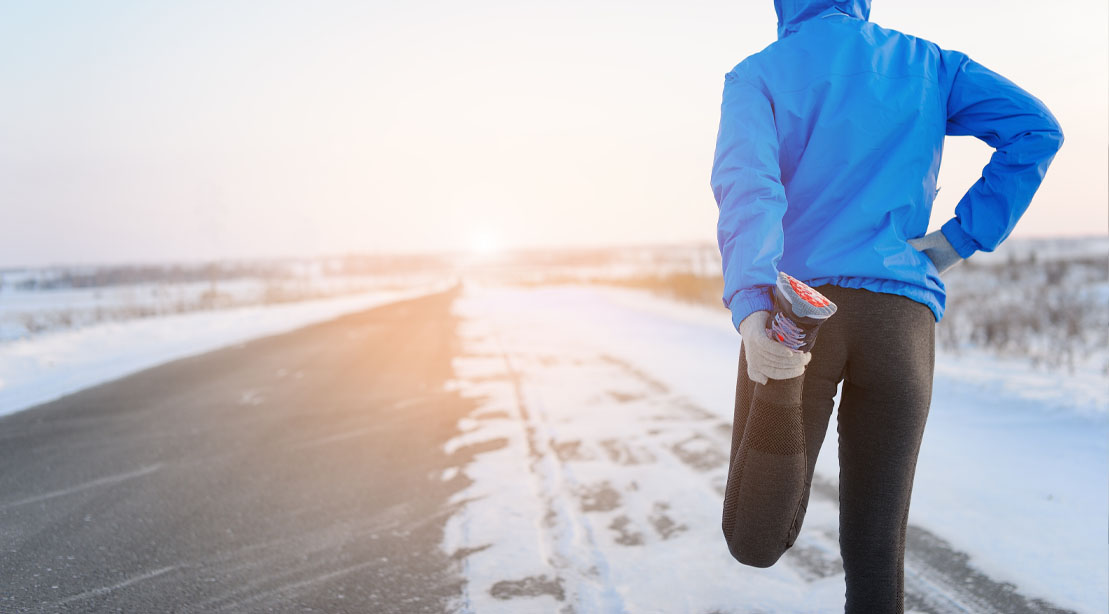With the long, hot summer of 2022 quickly turning to a crisp and fresh autumn, many of us are re-thinking our training plan and wondering how to stay consistent in the cold. If you are asking yourself if training in colder climates is OK or questioning whether being of mature age may increase your chances of injuries on the ice, M&F has you covered, and warmly wrapped up. Matthew Accetta, MS, ACSM-CEP, CSCS *D, CSPS earned a Bachelor of Science in exercise science, and a Master of Science with Distinction, in sports science, through the study of exercise physiology at Hofstra University in Long Island, NY. Accetta now works at the Hospital for Special Surgery. His expertise ranges from guiding athletes to peak performance, through to providing safe and effective training for those with neurological disorders and special needs.
Accetta is currently certified through the American College of Sports Medicine as a Clinical Exercise Physiologist. Furthermore, he is a Certified Strength and Conditioning Specialist with Distinction. We asked him for the cold, hard facts, as relates to training in falling temperatures.
Is it a good idea to give greater focus to warmups in the colder seasons?
“Warmup exercises, prior to training in the cold weather, provide a great benefit as they increase core and muscle temperature, increase neurological and muscle activation, as well as increase blood flow and oxygen uptake,” says Accetta. “Bodyweight exercises such as squats, walking lunges, high knees, and planks are great to include. These exercises help to raise body temperature, increase range of motion and lower your injury risk.”
What is the ideal clothing to wear for cold training?
“Studies show that when exercising in the cold you should wear layers,” says Accetta. “The layer closest to the skin should be tight and moisture wicking… but not too tight that it restricts blood flow. The next layer should provide insulation to preserve body heat. And, the outer-most layer should allow for ventilation and moisture to transfer especially if conditions are windy or raining. Gloves and extra socks should be worn to keep the hands and feet warm. A hat or headband is also a great to keep the heat from radiating and escaping from head and ears.”
Can some medical conditions can be exacerbated by training in the cold?
“Respiratory conditions such as chronic obstructive pulmonary disease (COPD) and asthma are exacerbated by training in the cold, as the cold air constricts the blood vessels in the lungs, disrupting air flow and making it difficult to breathe,” says Accetta. “The cold weather can also exacerbate autoimmune diseases such as MS or Lupus, as the cold places added stress on the body and can lead to difficulty moving the arms and legs, and muscle spasms.”
Are there any common injuries associated with training in colder climates?
“The most common injuries associated with cold weather training are muscle strains and joint sprains,” shares Accetta. “These often occur when a proper warmup does not take place and the joints and muscles don’t have a chance to regain some elasticity, remaining tight and restricting your motion.”
What would you advise someone who experiences any of these injuries?
“If you experience a sprain or strain while exercising in the cold you should immediately terminate your training session,” says Accetta. “You should give the affected area plenty of time to rest and recover before training again. If the affected area begins to swell you should apply ice in 20-minute increments of 20-minutes on, 20-minutes off. Elevating the affected area is also beneficial to allow the swelling to go down as gravity can help inflammation to leave the affected area. If pain continues to persist, you might want to make an appointment to see a doctor.”
Why are we more prone to injuries as we get older in colder of conditions?
“As we age, our tendons and ligaments tend to lose elasticity and make strains and sprains more likely to occur by over stretching them, and they don’t have the ability to return to their original length,” says Accetta. “Also, as we age, the ability for the body to maintain core temperature diminishes and so the body has to work harder to maintain homeostasis, this then taxes the cardiovascular and respiratory systems to work harder and deliver more oxygen-rich blood to working muscles.”
How can we continue to train and prevent injuries as we get older?
“A lot of times people don’t allow for ample recovery time between training sessions,” says Accetta. “This can lead to overuse injuries. They often push through those nagging injuries. Also, many times people don’t take the time to warm up and cool down properly.”
So, what are you your “take home” messages for those who want to train in colder climates?
“If you are just beginning a training regimen or haven’t exercised in a long time, it is recommended that you seek out the help and guidance of a health and fitness professional as well as get clearance from your doctor,” says Accetta. “If you are training outdoors on a cold and rainy day, make sure that you wear something that can make you visible to cars and other people passing by, because there may be less light in the evenings or other conditions may make you harder to see. Add reflectors to your bike or wear a high visibility shirt or jacket. It is completely okay to train in the cold as long as the proper measures are taken… make sure that you are appropriately dressed and warm up properly.” Sensible advice! So, the good news is that with a little preparation, and some respect for the elements, there’s no reason to drop your outdoor fitness regime this fall.
